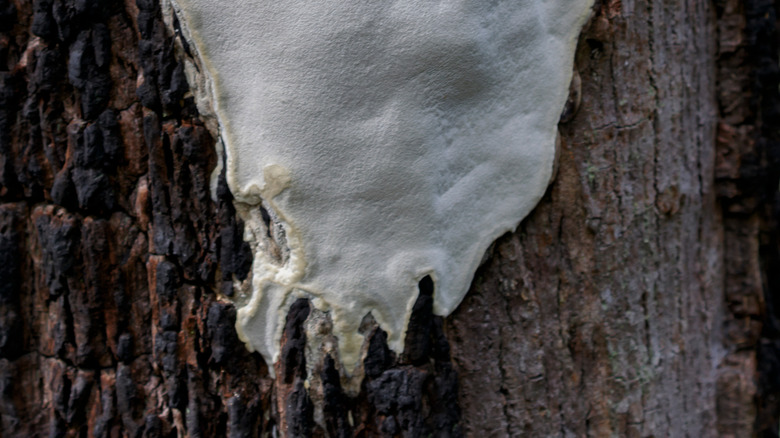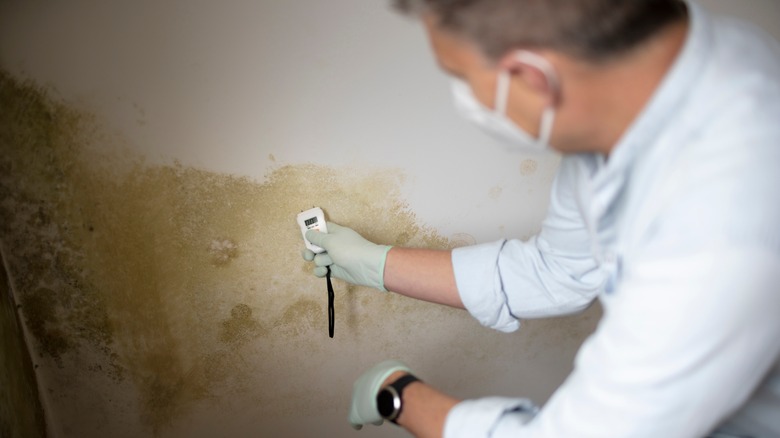TikTok Sheds Light On The House-Eating Fungus All Homeowners Should Be Aware Of
Have you heard of poria? If you haven't, you're not alone. In a TikTok video, creators @twinhomeexperts introduce viewers to "poria" or Meruliporia incrassata, also known as the "house-eating fungus." This microorganism can wreak major structural damage in a home — the TikTok duo even claims that it can set homeowners back as much as $150,000 when an infestation occurs.
Meruliporia incrassata is a wood-decaying fungus that plays a critical role in breaking down dead wood in forests. However, when it invades a home, it can become a serious problem due to its ability to compromise the structural integrity of a building. Poria isn't as common as some other household fungi — its rarity is largely due to its specific requirements for growth. It thrives in warm and humid climates, making it more common in regions like the Southeast. Still, infestations have occurred across the country over the years, and poria's destructive potential makes it a concerning issue for homeowners. Therefore, understanding the potential risk is essential.
Understanding Meruliporia incrassata
Poria typically enters homes through wood exposed to excess moisture or water damage. Other risks include having soil beds up against your home and cracks in a home's foundation. This house-eating fungus can remain hidden for extended periods, even years, while causing extensive damage beneath the surface — it often goes unnoticed until it has already caused harm. The fungus targets structural components, such as wooden beams, subfloors, and framing, slowly devouring the cellulose and hemicellulose in the wood.
Its preference for damp, moist conditions makes it especially troublesome in areas with high humidity or where water leaks go undetected. As it feeds on wood, it weakens the affected structural elements and compromises the safety of your home. To make matters worse, Poria can spread from its original point of entry, affecting more and more wood within your home structure. This ability to spread quickly (@twinhomeexperts says up to an inch every 24 hours) means you should act immediately when it's detected.
Prevention of and dealing with Poria
When it comes to dealing with Meruliporia incrassata, prevention is critical. To create an environment that's inhospitable to this fungus, moisture control is the key. Ensure your home is well-ventilated, as doing so can prevent excessive humidity levels. Regular inspections of wooden structures are crucial for the early detection and prevention of this fungal menace.
One of the sure signs of poria damage is the presence of rhizomorphs. These thread-like structures resemble shoelaces and serve as the fungus's highway for spreading through the wood. If you discover these rhizomorphs in or around your home, it's a clear indication that Meruliporia incrassata may be present, and you should seek professional assistance promptly. If you suspect a poria infestation, do not delay in taking action. Consult with a professional mold remediation specialist or a mycologist to assess the situation. They will determine the extent of the damage and the best course of action. Treatment may involve removing affected wood, applying antifungal treatments, and addressing the underlying moisture issue.

